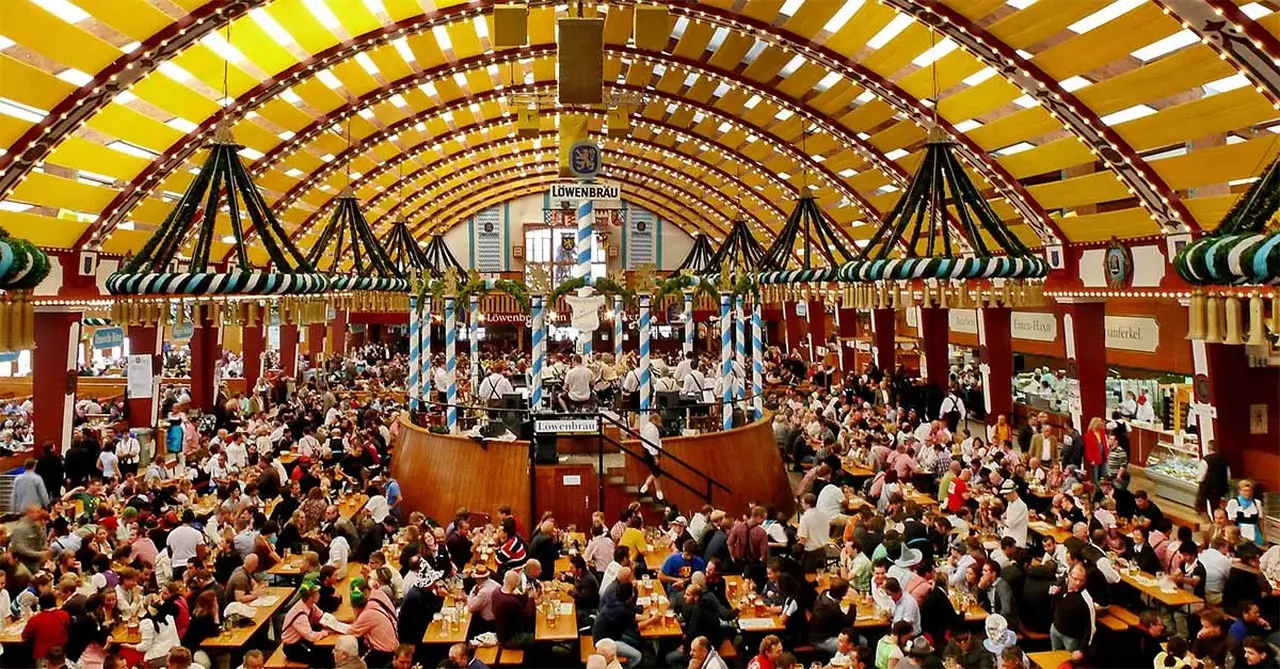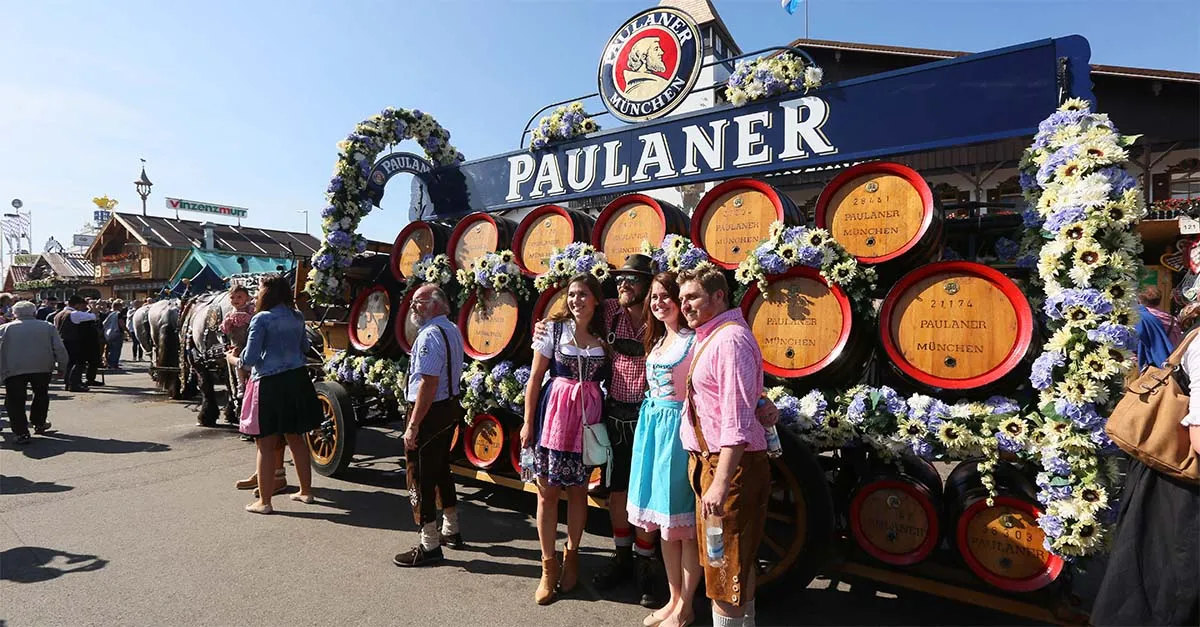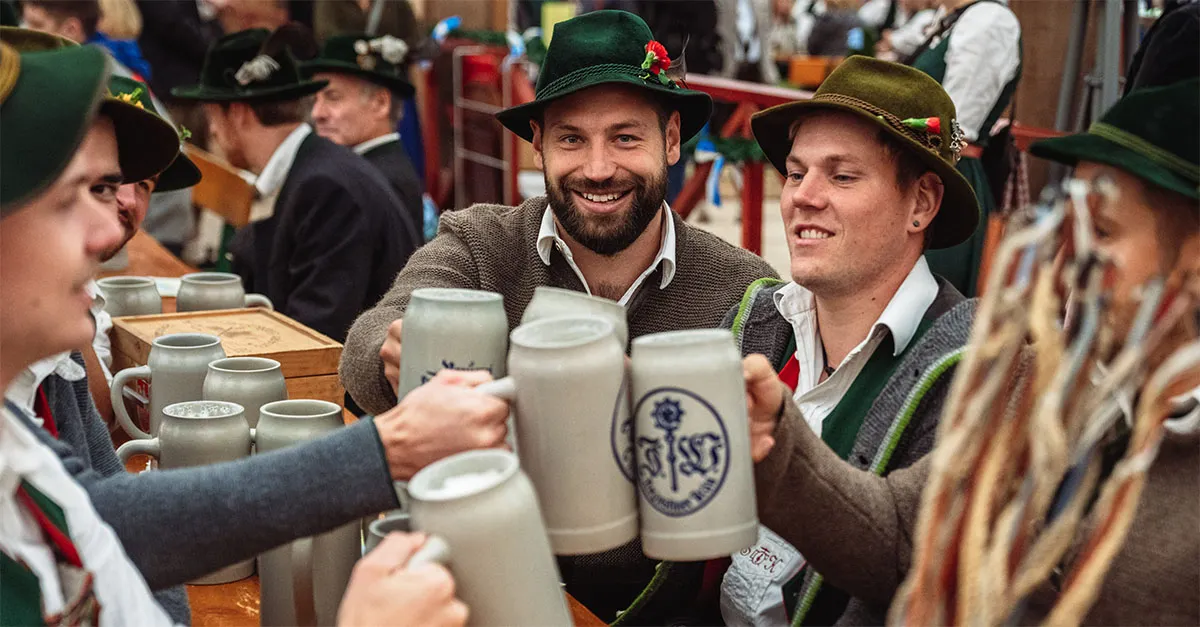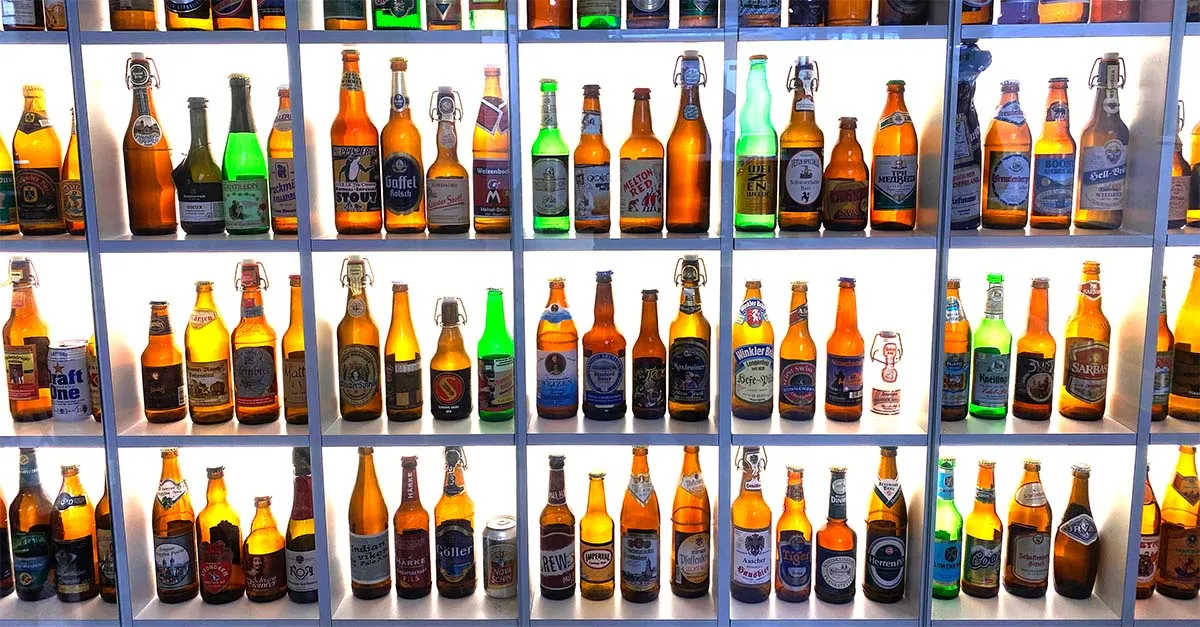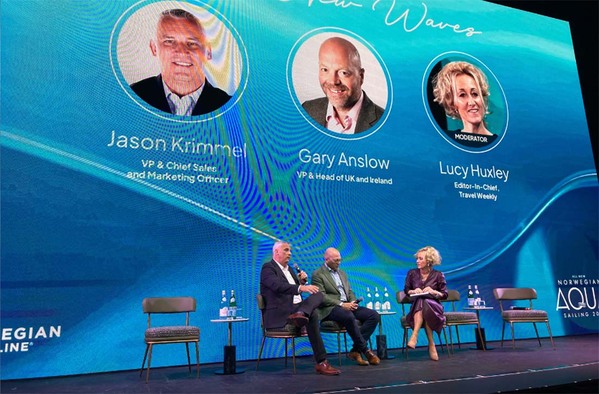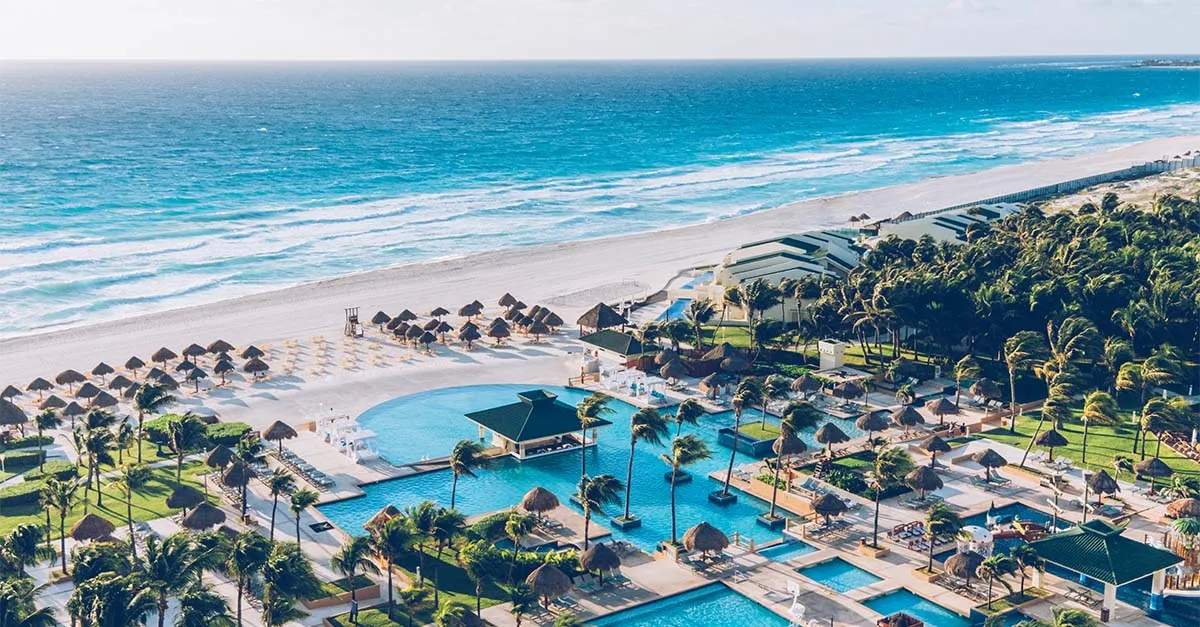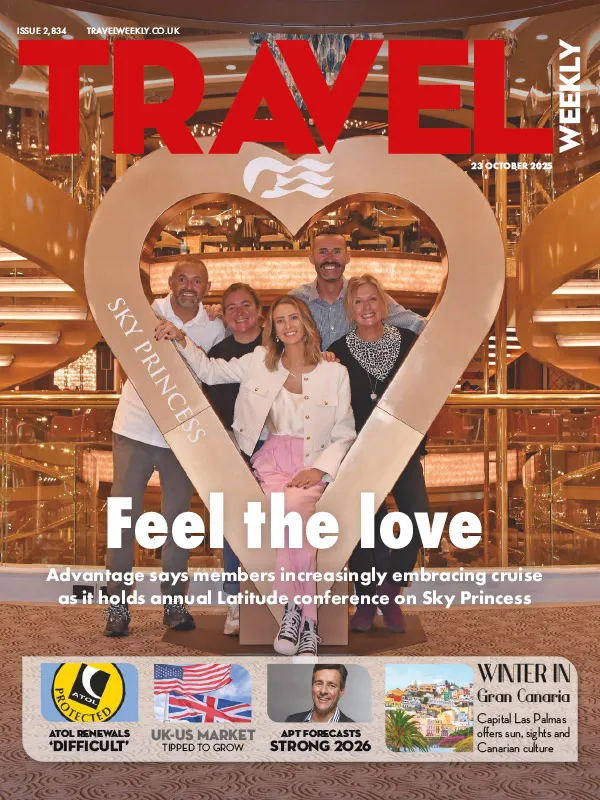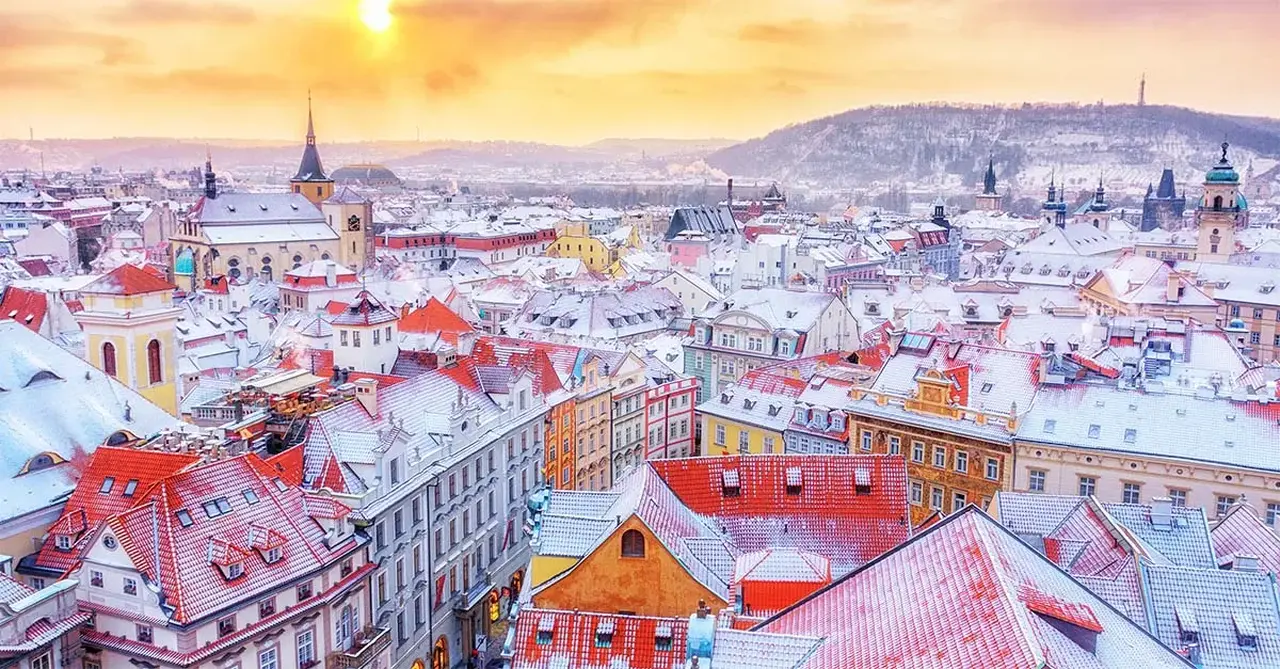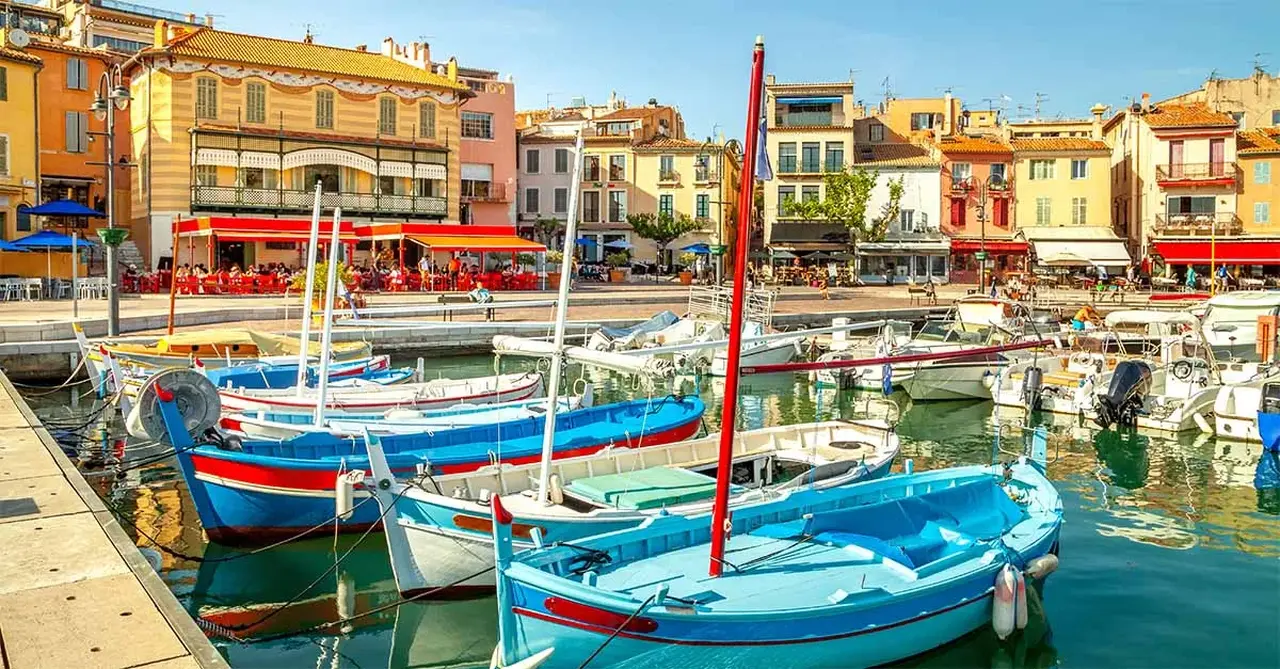You are viewing 1 of your 2 free articles
Why Munich is at its best during Oktoberfest
Discover the beery beauty of Bavaria on a hop-tastic tour of Munich – here’s what to look forward to next year
Click here to download and save as a PDF
There’s a secret to the steins that line the rear wall of Munich’s Hofbräuhaus brewery. In the main hall, which dates back to 1589, head past the beautiful ceiling frescoes and brass band to admire the rows of small metal cages, each containing a stein.
But these are not just any steins – they’re the personal drinking vessels of regulars, who pay €3 a year to rent their own stein locker. The bad news? They are so in-demand, there’s a four-year waiting list.
The brewery’s tours are perfect for beer-loving clients who want to go behind the scenes while enjoying the history of the Hofbräuhaus, which can accommodate 3,500 people in its chestnut tree-filled beer garden and various halls – including the upstairs one where homeless people from the area are served a traditional Christmas dinner every year.
Beer tours in Munich
A Paulaner brewery stand during Oktoberfest. Image credit: München Tourismus/Tommy Loesch
Chestnut trees have always been a staple of Munich’s beer gardens. In the days before refrigeration, they were planted above cellars to provide shade – their supersized leaves helped keep both the beer and its drinkers cool. A fun fact? One of the first refrigerators was invented in Munich in the early 1870s, following years of research partly funded by breweries.
The city is tapping into its beer heritage by launching an English-language Munich Beer Culture tour, which includes visits to breweries, plenty of local delicacies and entry to the Beer and Oktoberfest Museum.
It’s a great way to learn about the big hitters as well as lesser-known breweries, including the Stehausschanks that are now springing up. The word means ‘standing bars’ and the one I visit near Viktualienmarkt is tiny.
There’s no seating and it’s run by a crowdfunded brewery that wanted to offer a nod to the good old days, when locals would stop by similarly tiny watering holes for a quick beer and a chat with fellow imbibers, before going about their day.
I ask my guide if the brewery serves its beer at Oktoberfest and he laughs, explaining that the one behind the Stehausschank we’re currently in produces less beer in a year than breweries such as Augustiner serve in a single day at Oktoberfest.
Beer heritage in Munich
Beer drinkers at Oktoberfest. Image credit: München Tourismus/Jan Saurer
But one thing I’ve learnt about Munich is that some of the best insights into its beer-related history aren’t found in its breweries. The Bavarian National Museum is packed with priceless artefacts, including the oldest-known depiction of Easter, carved out of ivory in 1009.
But its collection also has some seriously spectacular steins, including beautiful silver tankards from the 1600s, some with carved ivory sleeves depicting biblical scenes. Just as stunning are the ceramic versions from the 1700s, when steins depicting Chinese pagodas were popular with Bavaria’s elite.
A wall of beer bottles in the Germany Hop Museum. Image credit: Tamara Hinson
And then there’s the tiny Beer and Oktoberfest Museum at Sterneckerstraße 2. Proof of Germans’ love of beer comes in the form of a letter written in AD98 by Roman scholar Tacitus, who expressed his shock at the amount of beer they consumed, along with a tablet engraved with a beer recipe that was discovered in Mesopotamia and thought to date back to 2400BC.
My favourite bit is the interactive screen where I learn about weird and wonderful steins, including one shaped like Munich’s Frauenkirche, a 15th-century church. Crafted by stein supremo Martin Pauson in 1890, it bears a lithophane (see-through porcelain relief) that depicts the statue of Bavaria standing in Munich’s Theresienwiese, which handily doubles as the location for Oktoberfest.
Bike tours on the Hallertau
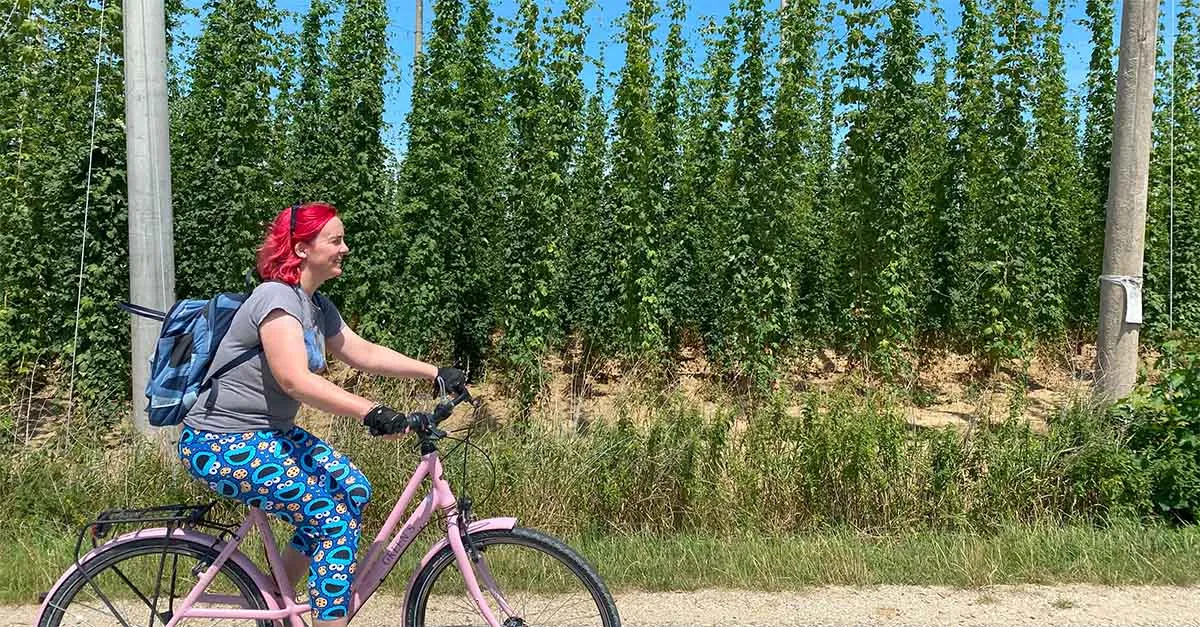
Tamara Hinson cycles along the Hallertau. Image credit: Paul Murphy
Clients keen to venture beyond the city should consider hiring a bike and exploring the Hallertau, the world’s largest hop-producing region. It takes about 30 minutes to get from Munich to Rohrbach by train. This pretty village is surrounded by fields filled with trailing, vine-like hop plants secured to towering trellises.
My destination is the nearby town of Wolnzach, home to the German Hops Museum. Getting there is easy – I simply join a stretch of the 108-mile Hallertauer Hopfentour, a hiking and cycling trail that weaves between rolling, hop-filled fields.
Information boards on the route reveal fascinating facts about hops, such as how plants must be woven around stakes in a clockwise – not anti-clockwise – direction, otherwise they won’t grow.
At the museum, I check out the earliest hop-picking machines and learn how the Industrial Revolution transformed the Hallertau from one of Germany’s poorest regions into one of its richest.
At the shop, I offload a lot of euros on hop-infused merchandise, including bath salts and a potent-looking spirit.
For a final toast to Munich, it’s got to be the city’s leafy Viktualienmarkt. In this huge open-air market and beer garden, tipples from Munich’s largest breweries are served in rotation.
It’s open year-round, and I recommend pairing a stein (or two) with local delicacies from the market stalls – try the delicious weißwurst (white sausages). At the centre of the market is a towering flagpole (or maibaum, the German word for maypole).
The one in Viktualienmarkt features the logos of Munich’s oldest breweries, alongside carved silhouettes that include a stein-clutching monk. Munich’s beer was once mainly brewed in monasteries and it’s a reference to the Munich Purity Law of 1487, which stipulated that beer could be brewed using only barley, hops and water – the basic ingredients still used today.
The rest, as they say, is history.
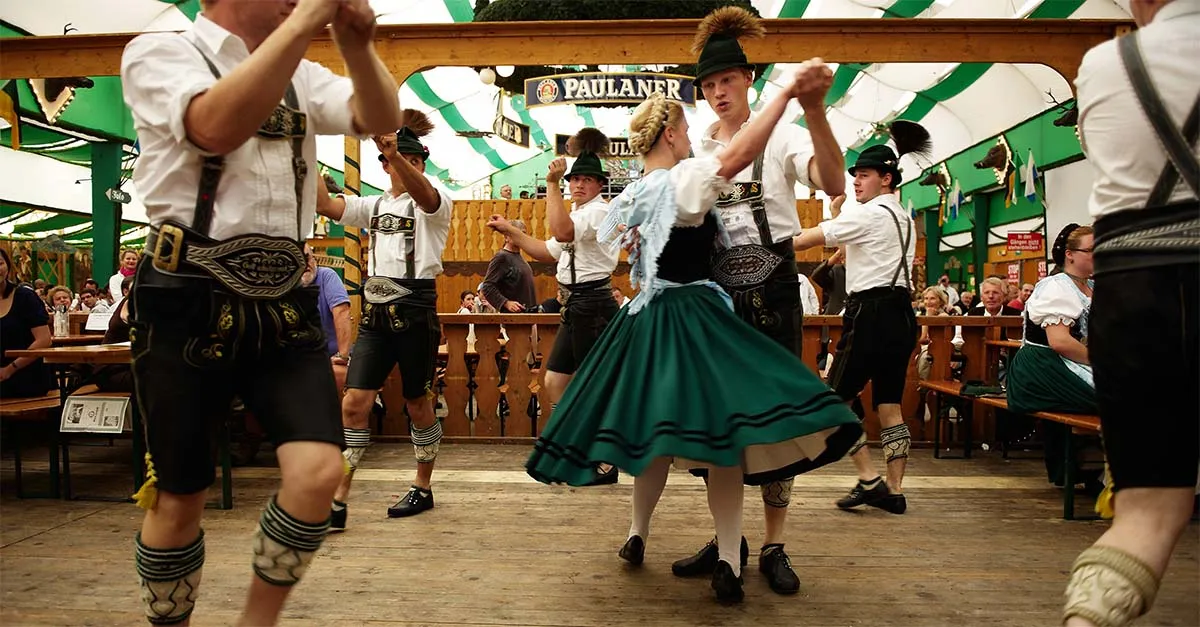
A dance during Oktoberfest. Image credit: München Tourismus/Frank Bauer
Book it
Fred Holidays’ four-night Munich & Garmisch-Partenkirchen package includes four nights in four-star accommodation, return flights from the UK to Munich and return rail tickets between Munich and the Bavarian town of Garmisch-Partenkirchen. Prices start at £699 per person, based on two sharing, departing March 14, 2026.
fredholidays.co.uk
Contiki’s four-day Munich Oktoberfest 2026 package includes three nights’ B&B accommodation and a Metro pass for Munich. Prices lead in at £671, excluding flights.
contiki.com
Ask the expert

Samuel Bodley, trip manager, Contiki
“One of Munich’s most famous landmarks is Marienplatz. This central square has been the city’s beating heart since 1158 and its [mechanical] glockenspiel puts on a delightful show at 11am every day. As for a top tip for beer lovers, tell clients to look out for restaurants and beer gardens displaying which official ‘Münchner Bier’ breweries they’re connected with. There are six, all with protected status, and the earliest dates from the 1300s.”
When is Oktoberfest 2026?
Munich’s Oktoberfest runs from September 19 to October 4, 2026

